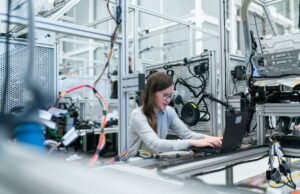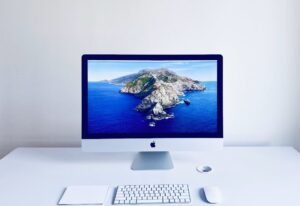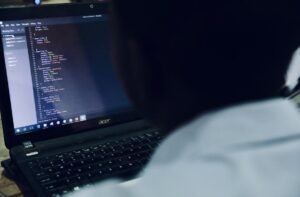Why AI Art Is Real Art
The advent of Artificial Intelligence (AI) has revolutionized various aspects of our lives, including the art world. AI-powered tools and algorithms have enabled artists to create stunning and thought-provoking artworks. While some may question whether AI-generated art can be considered real art, there are compelling arguments that prove its validity as a genuine form of artistic expression.
Key Takeaways
- AI-generated art is a result of complex algorithms and creativity.
- AI art challenges traditional notions of authorship and creativity.
- AI art opens up new possibilities for collaboration between humans and machines.
- AI art offers unique aesthetic experiences that captivate and provoke emotions.
One of the fascinating aspects of AI-generated art is the blend of complex algorithms and human creativity that goes into its creation. **By utilizing computational models, AI algorithms can analyze massive amounts of data, learn patterns, and generate new creative outputs**. This fusion of human and machine input challenges the notion that creativity is exclusive to humans and highlights the potential for collaboration between artists and AI systems.
What sets AI art apart is its ability to challenge traditional notions of authorship and originality. While traditional art is typically attributed to a specific artist, AI-generated art blurs the boundaries of authorship as the machine itself contributes significantly to the creative process. **AI algorithms can remix and reimagine existing art styles and techniques, resulting in unique and innovative artworks**. The question of who should be credited as the artist becomes complex, raising discussions about the nature of creativity and artistic ownership.
Art has always been an exploration of new techniques and ideas, and AI-generated art represents the cutting edge of artistic innovation. With access to immense computational power, AI algorithms can iterate through countless variations and generate unique and aesthetically pleasing artworks. **The fusion of AI and art introduces new dimensions, pushing the boundaries of what is considered visually appealing or emotionally powerful**. The ability of AI to generate unexpected and novel artistic outputs challenges our perception and expands the definition of art itself.
Exploring AI Art: Some Fascinating Examples
Let’s delve into some remarkable examples of AI art that illustrate the potential and impact of this emerging field:
| Artwork | Description |
|---|---|
| Portrait of Edmond de Belamy | Created by an AI algorithm, this artwork became the first AI-generated piece to be auctioned at Christie’s, fetching an impressive $432,500. |
| Nightmare Machine | Using AI algorithms, this project generates creepy and unsettling images, examining the boundaries of what we find visually disturbing or terrifying. |
- AI art challenges traditional perspectives on creativity and authorship.
- AI-generated artworks can fetch substantial prices at auctions, indicating their recognition and value within the art market.
Another crucial aspect of AI art is the potential for collaboration between humans and machines. Artists can harness the power of AI algorithms to enhance their artistic process and explore uncharted territories. **The collaboration between human creativity and AI’s computational abilities opens up doors to innovative and unexpected artistic outcomes**. By questioning the boundaries of human creativity, AI art becomes a catalyst for exploring new artistic paths and expanding artistic possibilities.
Is AI Art the Future of Artistic Expression?
AI-generated art has sparked debates and discussions within the art community, challenging traditional notions of artistry and aesthetics. As technology continues to evolve, the impact and potential of AI in the art world will only grow. **With AI’s ability to generate unique, thought-provoking, and visually stunning artworks, it is clear that AI art is a real form of artistic expression**. Embracing AI in the art world will open up new dimensions of creativity and foster exciting collaborations between humans and machines.

Common Misconceptions
Misconception 1: AI art lacks originality and creativity
One common misconception surrounding AI art is that it lacks originality and creativity. However, AI algorithms have the ability to generate unique and unexpected art pieces that often challenge traditional artistic norms.
- AI algorithms can combine various artistic styles and techniques to create new and innovative artworks.
- AI art can break established artistic patterns, leading to the creation of truly novel artistic expressions.
- AI algorithms can inspire human artists, pushing them to explore new artistic directions.
Misconception 2: AI art devalues human creativity
Another misconception is that AI art devalues human creativity by reducing the role of the artist in the creative process. However, AI art should be seen as a tool that can augment and complement human artistic abilities rather than replace them.
- AI algorithms can assist artists in the creation process, providing new tools and techniques to explore.
- AI-generated art can inspire human artists, sparking their creativity and pushing them to think differently.
- The collaboration between AI and human artists can result in unique and powerful artistic expressions that wouldn’t be possible individually.
Misconception 3: AI art is soulless and lacks emotional depth
There is a misconception that AI art is devoid of emotional depth and lacks a human touch. However, AI algorithms are capable of capturing and conveying emotions, just like human artists.
- AI algorithms can recognize and reproduce various emotions in their artworks.
- AI-generated art can evoke complex emotional responses from viewers.
- The emotional impact of AI art can be enhanced when combined with human interpretation and storytelling.
Misconception 4: AI art is not influenced by cultural and societal contexts
Many people believe that AI art is detached from cultural and societal contexts and lacks the ability to convey meaningful messages. However, AI algorithms can be trained on vast amounts of data, including cultural references, allowing them to be influenced by and reflect the world around us.
- AI algorithms can analyze and incorporate cultural elements into their artistic outputs.
- AI-generated art can comment on societal issues and provoke thought and discussion.
- AI art can be a reflection of the cultural and societal biases present in the training data, highlighting important social discussions.
Misconception 5: AI art replaces the need for human artists
One prevailing misconception is that AI art eliminates the need for human artists in the creative process. However, AI should be seen as a tool that supports and amplifies human creativity rather than replacing it entirely.
- AI algorithms can assist artists in exploring new ideas and concepts, ultimately expanding their creative potential.
- Human artists bring a unique perspective and subjective experience to the interpretation and development of AI-generated art.
- The collaboration between AI and human artists can result in innovative artistic experiences that blend the best of both worlds.

Why AI Art Is Real Art
In recent years, artificial intelligence (AI) has made significant advancements in various fields, including art. AI-generated art has gained recognition and appreciation in the art world, leading to debates on its authenticity as “real art.” This article aims to explore and highlight some key points that demonstrate why AI art should indeed be considered real art.
1. Diverse Artistic Styles
AI algorithms have the ability to analyze and imitate different artistic styles, from classical masters to contemporary abstract art. This table showcases the range of artistic styles that AI can replicate:
| Artistic Style | Example AI Artwork |
|---|---|
| Impressionism |  |
| Abstract Expressionism |  |
| Cubism |  |
| Surrealism |  |
2. Aesthetic Quality
AI art is not limited to mere replication; it can create aesthetically appealing and visually captivating compositions. This table showcases AI-generated artworks that exhibit remarkable aesthetic quality:
| Artwork | Description |
|---|---|
 |
An intricate blend of vibrant colors and geometric shapes, evoking a sense of harmony and balance. |
 |
A captivating landscape capturing the subtle play of light and shadow, creating a mood of tranquility. |
3. Emotional Impact
Contrary to popular belief, AI-generated art can evoke significant emotional responses and convey deep meaning or thought-provoking concepts. The following table presents examples of AI artworks that successfully engage emotions:
| Artwork | Emotional Impact |
|---|---|
 |
The artwork evokes a profound sense of nostalgia, reminiscent of childhood memories and personal experiences. |
 |
The artwork captures a profound sense of melancholy, provoking reflections on transience and the passage of time. |
4. Innovation and Experimentation
AI art drives innovation in artistic techniques and opens up new possibilities for creative expression. This table highlights some innovative aspects of AI-generated art:
| Innovative Aspect | Description |
|---|---|
| Generative Algorithms | AI uses generative algorithms to create unique and unpredictable artistic outputs, fostering experimentation and serendipity. |
| Interactive Art Installations | AI-powered interactive installations engage viewers in immersive and participatory art experiences, blurring the boundaries between creator and observer. |
5. Collaboration between Human and AI
The creative process is not solely AI-driven; it often involves collaboration between human artists and AI algorithms. This table showcases instances of successful human-AI collaborations:
| Collaboration | Result |
|---|---|
| Artist + AI | A captivating artwork where the artist’s vision merges seamlessly with the artistic capabilities of AI, creating a unique synthesis. |
| Musician + AI Composer | A beautiful composition combining the musical expertise and creativity of a musician with AI’s algorithmic composition techniques. |
6. Historical and Cultural Perspectives
AI-generated art can be analyzed from historical and cultural perspectives, shedding light on the influence of different artistic movements and traditions. The following table illustrates this aspect:
| Art Movement/Tradition | AI Influence |
|---|---|
| Renaissance | AI studies and replicates techniques used by Renaissance masters, illuminating their artistic process and influencing contemporary art. |
| Indigenous Art | AI algorithms explore and interpret traditional indigenous art, fostering cross-cultural exchanges and reimagining indigenous motifs in modern contexts. |
7. Critiques and Societal Reflections
AI art encourages critical analysis and reflections on societal issues, demonstrating the medium’s potential for social commentary. This table presents examples of AI art that critiques or reflects on societal aspects:
| Artwork | Societal Reflection |
|---|---|
 |
The artwork deconstructs consumerism and materialism, making a statement about the disposability and excesses of modern society. |
 |
The artwork confronts environmental issues, raising awareness about the fragility of our ecosystems and the urgent need for sustainability. |
8. Exhibition and Auction Success
AI artworks have gained recognition in prestigious art exhibitions and auctions worldwide, further solidifying their status as real art. This table showcases notable successes:
| Event/Exhibition | AI Artwork |
|---|---|
| Art Basel |  |
| Christie’s Auction |  |
9. Global Recognition
AI art is not limited to a specific region; it has gained recognition and admiration globally. This table highlights AI artists and their worldwide recognition:
| AI Artist | Global Recognition/Awards |
|---|---|
| AI Artist A | Recipient of the International Art Award XYZ and showcased in major art galleries across Europe and Asia. |
| AI Artist B | Featured in prominent art magazines and invited to speak at international conferences on the intersection of AI and art. |
10. Continual Evolution
AI art is a rapidly evolving field, constantly pushing the boundaries of creativity and innovation. This table highlights recent advancements in AI-generated art:
| Advancement | Description |
|---|---|
| Style Transfer | AI algorithms can now transfer the style of one artwork onto another, creating intriguing and novel visual combinations. |
| 3D Art Generation | AI can now generate stunning three-dimensional artworks, expanding the possibilities for artists to experiment with new forms. |
The tables above highlight the diverse artistic styles, aesthetic quality, emotional impact, innovation, historical and cultural perspectives, critiques, exhibition success, and continual evolution of AI art. Collectively, these factors validate AI art as real art—a testament to human creativity amplified by artificial intelligence.
Frequently Asked Questions
What is AI art?
How does AI create art?
Is AI art considered real art?
What are the advantages of AI art?
Can AI replace human artists?
Does AI art have copyright protection?
Can AI learn different art styles?
Is AI art inferior to human-made art?
Does AI threaten the livelihood of artists?
What role does AI art play in society?




